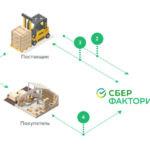Год выпуска: 2011
Производитель: CBT Nuggets
Автор: Jeremy Cioara
Продолжительность: 10:59:17
Тип раздаваемого материала: Видеоурок
Язык: Английский
Стоимость: 1999 рублей
Описание:
Cisco has retired this exam. However, the course retains value as an IT resource. Training for the new 642-832 exam is available from CBT Nuggets.
All trademarks and copyrights are the property of their respective holders.
[wpspoiler name="Подробное описание" ]
1. VoIP Networks: Understanding the Foundations (00:31:33)
Voice over IP (VoIP) -- What's the point? This video walks through a step-by-step explanation of the reasons a business should move to VoIP. Plus it gives you an overview of the network design and components that make it all happen.
2. VoIP Networks: How Your Voice Becomes a Packet (00:33:13)
"Sure... I'll be there at 10:00... See you then!" you say as you hang up the phone. It seemed like a simple conversation, but behind the scenes, a Cisco router busily chopped your voice into thousands of little packets and sent them whizzing across the network. Want to know how it all works? This video demystifies the process of converting your voice into a packet.
3. VoIP Networks: Allocating Enough Bandwidth (00:30:08)
VoIP does allow you to send voice across a network using less bandwidth than traditional phone equipment, but that does not mean that you can squeeze by without upgrading your WAN links. This video walks through the impact of CODEC selection, sample size, and Voice Activity Detection (VAD) on your WAN bandwidth considerations.
4. VoIP Networks: Implementation Considerations (00:23:45)
Just like any major network application, VoIP requires planning and design. This video walks through the three possible designs of a voice network as well as call admission control (CAC), a mechanism that lets you protect voice traffic from itself!
5. VoIP Networks: Implementation Considerations, Part 2 (00:28:50)
This is where the rubber meets the road! Join Jeremy as he walks through the configuration of POTS and VoIP dial-peer configuration to set up end-to-end calling across a Cisco network.
6. Quality of Service: Fighting the Bandwidth Monsters (00:26:29)
Quality of Service (QoS) used to be a cool trick Cisco network administrators could use to make web surfing for their PC faster than anyone else in the company. Those days are over. QoS has now become essential to nearly every network, regardless of whether or not you are using VoIP. Just as the title describes, this video walks through "Fighting the Bandwidth Monsters" of the network using a variety of QoS tools.
7. Quality of Service: Implementation Models and Methods (00:24:57)
QoS is not a simple mechanism you can just "turn on" for your organization. Before the first line of syntax is typed, you must put plenty of thought into QoS design. This video walks through three models of QoS design that have emerged over the years: Best Effort, Integrated Services (IntServ), and Differentiated Services (DiffServ). Plus you'll explore implementation methods supported on Cisco devices.
8. Quality of Service: Implementation Models and Methods, Part 2 (00:22:35)
It's time to understand the acronym of acronyms: Cisco's Modular QoS CLI (MQC). The MQC represents Cisco's newest (and best) method of implementing QoS on their devices. From end-to-end, this video stays in the live configuration interface as Jeremy walks through the components of the MQC.
9. Quality of Service: Classification and Marking: Layer 2 (00:23:05)
It's always the first step of implementing QoS: classification and marking. This video explains the difference between these two terms. In addition, this video focuses on understanding the data-link layer (layer 2) markings you'll need to move data smoothly through your switched environment.
10. Quality of Service: Classification and Marking: Layer 3 (00:35:14)
You don't have to be in QoS very long to find out that the concept of Differentiated Services Code Point (DSCP) markings is one of the most feared topics among IT personnel. After watching this video, you'll be able to amaze your friends, impress your relatives, and stun your co-workers as you carve through DSCP markings and configurations with ease.
11. Quality of Service: Using NBAR (00:33:51)
This video covers Cisco's Network Based Application Recognition (NBAR). This classification tool allows you to perform deep packet inspection, looking beyond simple IP address and port number information into the application data itself. Using this utility, you are able to discover dynamic port applications (such as peer-to-peer file sharing traffic) and apply restrictions.
12. Quality of Service: Queuing Fundamentals (00:31:03)
Learn the fundamentals and concepts of queuing. This congestion management tool gives you the capability to deliver bandwidth and delay guarantees to specific applications on your network. The queuing methods discussed include Custom, Weighted Fair, Priority, Class-based Weighted Fair (CBWFQ), and Low Latency Queuing (LLQ).
13. Quality of Service: Queuing Configuration (00:37:55)
This video explains how to configure your Cisco router for modern queuing methods. Using a practical scenario, the video walks you through a complete configuration of Weighted Fair Queuing (WFQ), Class Based Weighted Fair Queuing (CBWFQ), and Low Latency Queuing (LLQ).
14. Quality of Service: Congestion Avoidance (00:39:13)
Get a walk-through of the concepts and configuration behind the default tail drop and Cisco's Weighted Random Early Detection (WRED) dropping mechanisms. In addition to discussing the benefits of WRED, Jeremy shows a sample configuration using typical classes of traffic found in business network environments.
15. Quality of Service: Policing and Shaping (00:25:57)
Add two additional tools to your QoS tool belt: Policing and Shaping. The successful configuration of these two QoS components is heavily dependent on an understanding of the terminology used. The video first walks through the definitions of the terms used in policing and shaping and then applies these terms to a practical configuration example.
16. Quality of Service: Link Efficiency Mechanisms (00:25:33)
This video focuses on the two Cisco link efficiency mechanisms: compression and link fragmentation and interleaving. RTP header compression offers a huge bandwidth savings when used in combination with compressed audio codecs, such as G.729. Link fragmentation allows you to use methods such as multilink PPP (MLPPP) to "chip-chop" your way to a network geared for VoIP. With that in mind, use these methods at your own peril! Watch the video to find out why.
17. Quality of Service: Through VPNs and Service Providers (00:20:45)
Is QoS even possible over a Virtual Private Network (VPN) connection? Service providers are changing old paradigms one link at a time. This video describes how VPN-based QoS could become a reality.
18. Quality of Service: The Magic Wand of AutoQoS (00:38:37)
Experience the closest Cisco has ever come to command-line implementation of a wizard with Cisco AutoQoS. This is the most popular style of QoS implemented in the world; however, it's not a QoS method at all. Check out this video to get all the details.
19. Wireless Networks: Wireless in the Cisco World (00:29:11)
Cisco has implemented wireless with more flexibility and functionality than typical wireless vendors. Wireless access points can be deployed in autonomous or lightweight mode, giving you completely different management systems that support them. This video covers the methods used when deploying Cisco wireless as well as the two management systems used to support them: CiscoWorks WLSE and Cisco WCS.
20. Wireless Networks: Security and 802.1x (00:50:46)
Have you ever wondered what the differences are between WEP, WPA, and WPA2? You've implemented them many times on typical wireless access points, but how secure are they? This video walks you through the evolution of wireless security and authentication, as well as the weak points of those methods typically considered "adequate" in most environments.
21. Wireless Networks: Cisco Wireless Configuration (00:33:22)
You've pulled the Cisco wireless access point out of the box... now what? This video walks through the basic (express) configuration of a Cisco wireless access point and security standards.
22. Wireless Networks: Wireless QoS (00:13:15)
With the plethora of new wireless devices entering the market, the need has arisen for a wireless QoS standard. The final standard of 802.11e is currently implemented as a smaller subset: Wi-fi MultiMedia (WMM). This video explains the foundations of this standard.
[/wpspoiler]

